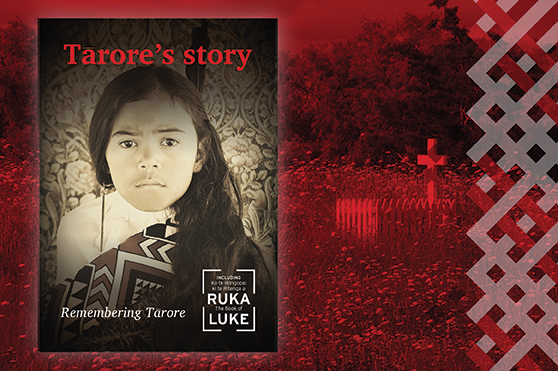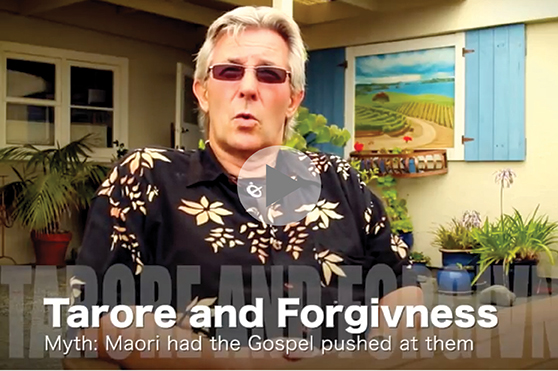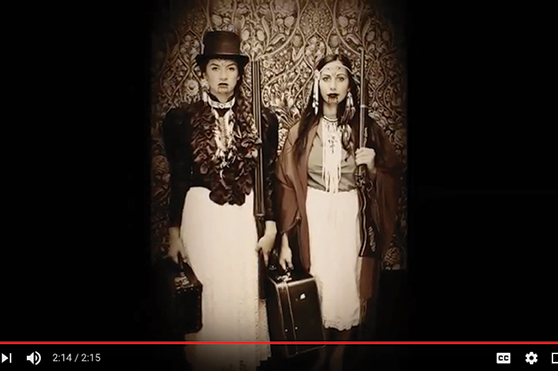
The story of Tarore of Waharoa
Tarore of Waharoa
Tarore was from the Ngati Haua tribe. Her father was Ngakuku, a nephew of the great Te Waharoa, and himself a chief of the Ngati Haua of Tainui (see 14 May). Tarore attended a mission school and learned to read. In 1836 she was given a copy of the Gospel of Luke published earlier that year.
A mission station had been opened at Matamata by A.N. Brown and his wife Charlotte in April 1835 on a site provided by Te Waharoa. Troubles in the area persuaded the Browns to close the station and evacuate the school to Tauranga in October 1836. Ngakuku and the CMS missionary John Flatt led a party of children over the Kaimai Range. The journey took them to the Wairere Falls where they made camp. The camp fire attracted a raiding party from Rotorua, led by Uita. Those in the camp responded quickly, and after some fighting the raiding party withdrew. In the confusion Tarore had been left where she had fallen asleep. When Ngakuku and the others returned to the camp they found Tarore had been killed, still on her sleeping mat. She was twelve years old. Her death immediately created a desire for utu, but at her funeral the next day at Matamata, Ngakuku preached against revenge, saying there had been too much bloodshed already and that the people should trust in the justice of God.
Tarore’s copy of the Gospel of Luke had a continuing history. Uita had taken Tarore’s Gospel during the attack, thinking it might be of value. However, he was unable to read, and it lay unused in his pa. Some time later a slave who could read, named Ripahau, was brought to the pa. He read to the people from the Gospel. This led to the eventual reconciliation of Uita and Ngakuku.
Later, the slave Ripahau left Uita’s pa and returned to Otaki, coming into contact with Tamihana Te Rauparaha from Kapiti Island, the son of Wiremu Te Rauparaha, the great Ngati Toa chief (see 18 May). Ripahau again was invited to read from the Scripture to Tamihana and his cousin Matene Te Whiwhi. In this way the two learned to read. However, Ripahau had only a few pages at his disposal, and in time a messenger was sent back to Rotorua for more books. The book that was returned to them, now somewhat worn, was the Gospel that Tarore had used, still with Ngakuku’s name on it. In time Tamihana and Matene became Christians, and Ripahau himself was converted. It is said that Tamihana and Matene took Tarore’s book with them when they travelled to the South Island, preaching the gospel of peace and reconciliation.
Tarore died on 19 October 1836 and was buried at Waharoa. Her grave is the site of many visits and commemorations. In 1986 there was a large ordination of Maori clergy on her day, near the site of her grave. Her story has long been amongst the taonga of the church in Aotearoa.
For further reading:
William Williams, Christianity among the New Zealanders, Edinburgh, Banner of Truth Trust, 1989 (reprint of the 1867 edition), chapter 12.
For Liturgical Use
Tarore, the daughter of Ngakuku, the Ngati Haua chief, attended the mission station at Matamata and learned to read. Tragically, on 19 October 1836, at the age of twelve, she was killed during a raid. Her father preached forgiveness at her tangi. The Gospel of Luke that was with her was taken by one of the raiding party, who was subsequently converted and made peace with Ngakuku. Later it was taken to Otaki, where its message led to the conversion of Tamihana Te Rauparaha, who became a missionary to the South Island.
Sentence
Ki a koe ano i mohio o tou tamarikitanga ake, ki nga karaipiture tapu, ko nga mea era e whai matauranga ai koe, e ora ai, i runga i te whakapono ki a Karaiti Ihu. 2 Timoti 3:15
From childhood you have known the sacred writings that are able to instruct you for salvation through faith in Christ Jesus. 2 Timothy 3:15
Collects
E te Matua i te Rangi
i karangatia matou kia rite ki te tamariki nohinohi
i te mea no te penei te rangatiratanga o te Rangi.
Ka whakawhetai matou mo Tarore
i kawe nei i te Rongopai a Ruka.
Hanga ki roto ki a matou i tau whanau hoki
he aroha kia pono kia hohonu kia noho tahi ai matou
i roto i te aroha me au tamariki katoa,
i roto i te kotahitanga o te Wairua Tapu,
ko te Karaiti hoki te Hepara pai. Amine.
Gracious and loving God,
we thank you for Tarore,
whose death brought not vengeance but reconciliation;
create in us, your whanau,
a gospel love and a truth so deep,
that we too may live together in love with all your children,
in the unity of the Holy Spirit;
through Jesus Christ our Redeemer.
Praise to you, Jesus Christ our Saviour,
for the good which came from Tarore’s death;
for, led by a little child,
you brought the tribes to peace,
and by her testament you brought good news to the south.
Psalms 4 131
Readings
Isaiah 65:17-20(21-22)23-25 God’s promised peace
2 Timothy 1:8-12 Suffering for the gospel
Luke 8:22-25 Living faith
Post Communion Sentence
Kia noho nui te kupu a te Karaiti i roto i a koutou i runga i te matauranga katoa; me whakaako, me whakatupato tetahi e tetahi ki nga waiata tapu, ki nga himene, ki nga waiata wairua, me te waiata ano ki te Atua i runga i te aroha noa, i roto i o koutou ngakau.
Korohe 3:16
Let the word of Christ dwell in you richly; teach and admonish one another other in all wisdom. Colossians 3:16



